 Loading...
Loading...-
Initial trade data suggest that the EU’s tariffs on Chinese electric vehicles (EVs) in 2024 slowed the growth of their share in the single market compared to forecasts. However, it has not blunted the risk Chinese EVs present to European automakers, which was demonstrated by the more than 100,000 job losses announced last year.
The US–China trade war will add to these economic woes as European automakers are squeezed out of the Chinese EV market and could lose the US export market. Moreover, Chinese EV producers are opening plants in Spain, Hungary and the European neighbourhood to circumvent tariffs and divert trade. The Lower Saxony region in Germany, for example, cannot afford the loss of taxes from workers, corporate taxes and dividend payments from Volkswagen if it closes plants in the region.
Nor can policymakers ignore the data security risks: under China’s National Intelligence Law, Chinese EV producers are legally required to work with the Ministry of State Security, and some European companies are advising their staff not to connect their phones or discuss their work in Chinese EVs. Chinese EVs are built on the basis of one-sided technology transfer. In the limited joint ventures in Europe where member states have increased local requirements, Chinese companies have cancelled projects. Alongside the presence of Communist Party cells in these companies, it is highly unlikely that Chinese EV producers will transfer technology to European automakers.
Tariffs alone will not save the sector. Policymakers need to soberly assess the ‘red flags’ that Chinese EVs present and consider practical policy recommendations and ‘red lines’ to protect jobs and data security and create a European alternative. This includes a market share cap for Chinese EVs, the creation of a sovereign cloud storage system, and the creation of joint ventures with Japanese and Korean EV battery manufacturers.
China Environment Technology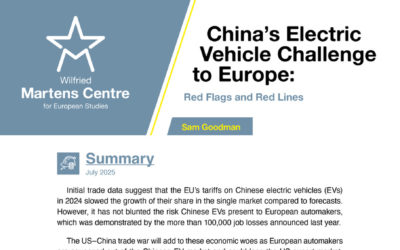
China’s Electric Vehicle Challenge to Europe: Red Flags and Red Lines
Policy Briefs
08 Jul 2025
-
With its 2019 Green Deal and the goal of carbon neutrality by 2050, the EU aims to become the most influential global actor when it comes to advancing the international agenda on decarbonisation and the fight against climate change. Geopolitical conflicts have increasingly shifted political priorities and resources, making the commitments pledged in the previous decade even more challenging to achieve. At the same time, resilience and economic security have become key criteria for the future transformation.
Through its domestic and external relationships, the EU has to be able to ensure a sufficient and reliable supply of materials, fuels, technologies and skills, while meeting the energy demand of its citizens and industries in a secure, flexible and efficient manner. The benefits of the transformation project must be balanced with the need for social acceptance. Openness towards manifold innovation patterns is as important as political and regulatory predictability.
Given the gigantic financial resources needed to transform the existing fossil-based economies, the role of the private sector is crucial to making this happen faster and in a more cost-efficient manner. The volume of private investment in technology and infrastructure must be scaled up massively, as public sources will be less available due to the already high levels of debt. Due to the the existing regulatory framework, financial instruments are still not sufficiently accessible for a large part of the corporate sector. In particular, small and medium-sized enterprises (SMEs) lack access to bond market investors and various sophisticated products.
For too long, issues linked to the green transition have been separated from those related to the security of raw materials. But this ignores the ways in which both kinds of issues are inextricably bound up with each. This is because some of these raw materials are components essential to digitalisation, and the green transition and digitalisation are inseparably linked with each other. Ensuring a stable and affordable raw material supply chain without getting into new import dependencies, with all their geopolitical implications, requires a strategic reorientation of European politics.
The EU has to regain lost ground in the design and production of innovative clean technology. Most of the progress in this area is being made in North America and Asia, and it is there that most large-scale production is also taking place. State subsidies have distorted the level playing field and given rise to daunting challenges for European companies.
Environment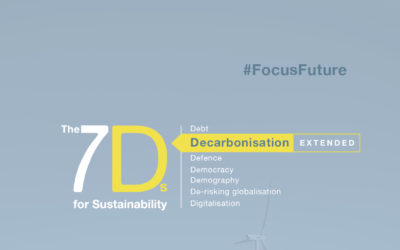
The 7Ds – Decarbonisation Extended
The 7Ds
30 Dec 2024
-
With its 2019 Green Deal and the goal of carbon neutrality by 2050, the EU aims to become the most influential global actor when it comes to advancing the international agenda on decarbonisation and the fight against climate change. Geopolitical conflicts have increasingly shifted political priorities and resources, making the commitments pledged in the previous decade even more challenging to achieve. At the same time, resilience and economic security have become key criteria for the future transformation.
In 2023, the Martens Centre published its 7Ds for Sustainability strategy document. This text comprised 175 proposals for the next legislature to future-proof EU policy in the areas of debt, decarbonisation, defence, democracy, demography, de-risking globalisation, and digitalisation. Sustainability was chosen as the guiding principle to ensure that the policies reconcile the needs of both the present and the future, and systematically include the interests of the next generations.
The 7Ds document has already inspired reflection on what to do over the next five years. These discussions are based on Christian Democrat and conservative thinking and the available in-house expertise of the Martens Centre. For the next phase of intense discussions about the programme to be implemented during the 2024–9 legislature, the Martens Centre has invited renowned external experts to put forward their own, more extensive proposals based on the original document, thereby deepening the available expertise. It is hoped that these proposals, published at the beginning of April 2024, will help to clarify the way forward at a critical juncture, when the European Parliament, the European Commission and the European Council are negotiating on and finalising their strategic priorities.
Energy Environment Sustainability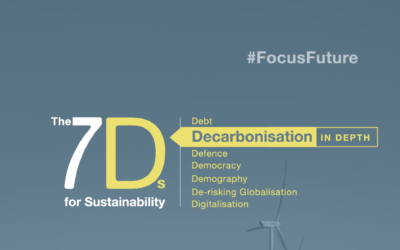
The 7Ds – Decarbonisation in Depth
The 7Ds
22 Apr 2024
-
The big announcement finally came. The European Commission will investigate whether China’s electrical vehicles (EV) industry has benefitted from over-generous state support in order to price-cut European competitors. A few days ago, the acting competition commissioner hinted that a similar move might follow on Chinese wind turbines. China’s EV and wind turbine manufacturing sector (similar to battery and photovoltaic production) has followed the same ruthless blueprint on state subsidies, preferential loans and intellectual property theft.
The EU probe on illicit Chinese state subsidies is not only the right move, but is actually long overdue. More importantly, the belated reaction on taming Beijing’s notorious dumping strategy is vital as it goes beyond potential tariffs. This is a much needed wakeup call for the EU to focus on its own long-term competitiveness in key sectors and recognise the shortfalls of its current industrial and climate policy.
China’s Dirty Playbook on Clean Technology
Since the 2000s, the Chinese Communist leadership has provided massive state support to a number of key sectors in order to upgrade its manufacturing base and shift towards high-tech products. This turned into a selective breeding programme for national champions in telecommunications (Huawei, ZTE), semiconductor manufacturing (SMIC) and advanced lithium-ion batteries (CATL), among others. The generosity in supporting EVs has become obvious – five of the top 10 subsidy recipients in 2023 are electric vehicles or batteries producers. The overall subsidy spending for the whole EV sector is estimated to more than $125bn between 2009 and 2021.
Additionally, numerous state-owned enterprises and favoured companies have received huge indirect benefits. The IMF calculates that at least 3 % of Chinese GDP is allocated for implicit support to China’s valuable industrial offspring. Dozens of ‘private’ companies have received huge tax breaks, free land use or preferential loans from local governments. Protectionist localisation policies also mean that foreign automotive manufacturers could only enter China’s massive market if they form a joint venture with a Chinese company, which in turn has full access to intellectual property (IP) and a strong stake in decision-making.
The final ingredients to China’s special sauce are the extremely cheap energy prices for industrial manufacturing (usually from dirty coal) and the abundance of natural resources. International leaders are obsessed with China’s dominance in minerals and rare earths, but many are embarrassingly silent on the tragic but simple fact that Uighur slave labour is a large part of the story.
Tariffs are coming. Then what?
Cutting to the chase, yes, China is massively subsidising its clean tech industry. The EU probe on EVs will most likely confirm this in 2024 and the European Commission will suggest raising existing tariffs on imported cars from China. However, even if the EU doubles its current levies, most of the small-scale Chinese EVs, which currently hover around 20 000 euros, will remain cheaper than all other European brands. Even though there is a sense of media panic about Europe’s auto sector, the situation is far from grim. Close to 90 % of the new cars sold globally remain classic internal combustion engine vehicles or hybrids. European cars continue to be among the best when it comes to the mid and high end of sold vehicles.
The rumours of Europe’s car producers’ death are greatly exaggerated, but the clock is ticking as the EV share is growing. Ironically, the raised EU tariffs will cause more damage to Western brands, rather than Chinese ones. Most of the current European demand for imported EVs is for Shanghai-made Teslas and Sino-European joint ventures, such as the Dacia Spring and BMW iX3. Tariffs also won’t solve the problem of competing with China in third countries, where European manufacturers will also be squeezed on price.
Europe must indeed retaliate against Beijing’s international dumping, but this comes too little, too late. The hard truth is that Chinese-made EVs will remain dominant in the low-mile range, low-cost segment and continue to benefit from an efficient, vertically-integrated strategy which simply produces cars at scale. This is definitely a red flag for many European producers who struggle with legacy costs or their own inability to optimise production.
Greener, Protectionist and Poorer?
The EV scare is just another addition to the EU’s growing list of technological and industrial concerns. Europe is suffering from high labour costs, low digital intensity within enterprises, volatile energy prices and mounting regulatory requirements. Fortunately, the EU (and European car-makers) continue to benefit from a highly specialised workforce in key sectors and is essential to global value chains. However, the tormenting question remains: What will be the EU’s long-term comparative economic advantages?
This conversation is essential, as it will finally push the EU to confront its biggest international competitor on trade. There is still a persistent hangover in Brussels about the US Inflation Reduction Act (IRA) and European angst on the American attempt to attract global clean tech investment in the US. For all the fuss, the IRA remains mostly a programme for corporate and consumer tax incentives. The freshly committed grants and loans sections of the IRA pale in comparison to the galvanising, decades-long effort by the Chinese to subsidise, protect and promote their own industries.
Brussels is slowly beginning to realise that its own recent efforts are mostly about burning money and trying to re-imagine global markets. The billions of Euros committed to green growth through the European budget or the ambitious Recovery and Resilience Fund risk becoming a one-off Keynesian injection to keep European companies liquid, but not provide the much needed breakthroughs and industrial advancement. We are neither decarbonising nor upgrading the European economy at the necessary pace.
The EU needs to urgently recalibrate its Green Deal and industrial focus so it can actually boost European growth and mobilise large-scale private investment. In parallel, we need a viable strategy for economic security and respond to all the investment and trade risks we face in dealing with the Chinese. Not to mention the fact that our astronomical trade deficit with China keeps rising while European companies suffer from lack of market access or discriminatory restrictions.
The upside here is that the EU is finally moving away from its naiveté towards the Asian hegemon and will develop the much needed tools and incentives to solidify its geopolitical standing. Competitiveness, economic clout and deterrence will be the name of the game; not soft power and aspirational international commitments.
Dimitar Lilkov China Environment Trade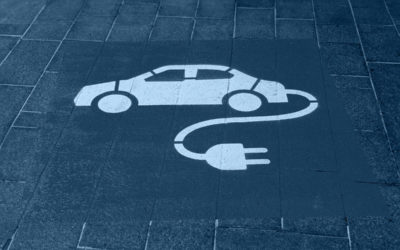

Dimitar Lilkov
Who’s Afraid of Chinese Electric Vehicles and Clean Tech?
Blog
17 Oct 2023
-
In light of European efforts to find alternatives to natural gas supplies from Russia, one major potential alternative source is often overlooked in policy debates. Namely, indigenous natural gas production from offshore fields.
In recent years, many EU member states have snubbed offshore gas production development, driven mostly by climate concerns. Many Western European nations have either introduced a legal ban on offshore drilling, or de facto ceased licensing offshore activities. However, the current crisis leaves Europe with little choice but to reconsider that approach.
Yes, resuming offshore natural gas development presents a painful deviation from the general policy pattern of ending reliance on fossil fuels and achieving decarbonisation goals. However, it is not nearly as bad as resuming coal-fired power generation, and it offers future opportunities for convergence with the green energy transition, as offshore wind installations can replace the natural gas production platforms after gas production is terminated.
Countries like Romania or Turkey have greatly benefited from pursuing policies aimed at increasing offshore gas exploration and production. In 2022, Romania received the first quantities of natural gas produced from the Midia Gas Development (Ana and Doina gas fields in the Black Sea). This is the first new offshore gas development in the country in more than three decades and will produce up to 1 bcm of gas at peak. Romania, with its relaxed approach to offshore gas drilling, is not only set to become fully energy independent, but also the biggest natural gas producer in the EU. Currently, Romania holds estimated untapped Black Sea gas reserves of between 170 and 200 bcm – these figures can increase with further exploration.
Turkey has also enjoyed success in this domain, and recently began construction of the underwater pipeline network that will connect the offshore Sakarya gas field with the onshore gas processing facility in the northern Black Sea province of Zonguldak. Gas production is expected to begin in the first quarter of 2023, with peak production over 3,5 bcm per year.
Their shared neighbour of Bulgaria, on the other hand, has been comparatively much slower in licensing its offshore gas reserves for exploration, although it has been picking up the speed recently.
Unleashing the Black Sea’s offshore gas potential may help create a sizeable natural gas production hub that would resolve the problem of vulnerability experienced by South Eastern European nations; who, until recently, were the most dependent on Russian gas – Bulgaria, Hungary, Greece, and the Western Balkan nations. This could also have profound implications for achieving the energy independence of Moldova, which can benefit from access to this rapidly developing Black Sea gas production hub – and even Ukraine. Ukraine has its own untapped Black Sea offshore gas production potential, and realising it will be quite helpful for the country’s post-war reconstruction. Moreover, Ukraine can also contribute to a potential Black Sea gas market hub.
Further linking this potential regional gas hub with new centres of gas production in the Eastern Mediterranean – Cyprus, Israel, Turkey, Lebanon, Egypt – may create a powerful South Eastern European gas hub, which will be a net exporter of gas further to the rest of Europe, and will eliminate the region’s need for gas dependence on Russia once and for all. As mentioned above, this would be a very important step towards achieving energy independence for Moldova, and decoupling the country from Russian energy supplies.
Other countries in Southern Europe which have been moving towards drilling offshore gas to enhance security of energy supply are Greece and Italy. Before Putin’s war against Ukraine, these countries were some of the most dependent on Russian gas supplies – but now they are making steps towards achieving a greater extent of energy independence by tapping their offshore gas reserves potential. Greek Prime Minister Kyriakos Mitsotakis has promised to expand the country’s gas exploration program in response to rising oil and gas prices.
The new Italian government plans to double its national gas production to 6 billion cubic meters (bcm) per year from the current 3 bcm, as per Minister of Economic Development Adolfo Urso. Earlier this year, several gas prospects off the Sicilian coast were identified under the exploration license granted to ADX Energy.
Even Germany has reversed years of scepticism towards offshore gas drilling in light of the Russian war against Ukraine, granting a permit for exploration of gas reserves near the Wadden island of Borkum in Lower Saxony. However, certain Western European countries – France, Spain, Portugal, the Netherlands – remain sceptical towards offshore drilling as part of a general policy approach aimed at ending the use of fossil fuels. In some of these countries, there are legislative or governmental bans on offshore drilling in place (Spain, France, Portugal). In the Netherlands, the licensing and development of offshore gas exploration and production has de facto stopped.
These policies may have seemed adequate before the war and the current confrontation with Russia, but now, a reversal is clearly needed. Taking into account all the understandable scepticism about developing fossil fuels, producing more offshore gas is a much better solution to meet Europe’s energy needs, compared to the revival of coal or heavy fuel oil power and heat generation.
Those opposed to offshore gas drilling due to climate concerns should remember that Europe had previously contracted the purchase of Russian gas for decades to come – much longer than the anticipated lifespan of small EU offshore gas fields. This would have generated much more carbon emissions. New EU offshore gas drilling is simply a better alternative to the previous reliance on Russian gas, from a climate standpoint.
Yet another important factor related to the green transition is that offshore gas platforms at small fields can be later transformed into offshore wind platforms, after their lifespan is expired. For instance, in Croatia, oil and gas company INA is planning to install offshore wind farms in the northern part of the Adriatic Sea after closing its natural gas platforms in 2025.
WindEurope reports that the European Union is severely underperforming on its plans to develop offshore wind, not least due to bureaucratic permitting bottlenecks. According to the Global Wind Energy Council, offshore wind capacity in Europe has reached 18 GW in 2021, but it is simply not enough volume, considering that the EU needs 32 GW of new wind capacity each year until 2030 to reach its carbon neutrality target by 2050.
According to WindEurope, in 2021, new offshore wind installations in Europe amounted to just 3,4 GW, while at the same time the continent would need to install more than 8 GW of offshore wind capacity on average per year over the period of 2023-2026 to reach its energy and climate targets.
Drilling more offshore gas and later transforming the gas platforms into offshore wind farms after the gas fields become depleted is a potentially rewarding plan for securing Europe’s independence from the Russian gas, security of energy supply, and minimising the damage caused by Russia’s war against Ukraine to Europe’s energy transition and its climate and decarbonisation goals. If the EU can reach peak levels of production for its currently frozen and under-explored offshore natural gas fields at the level of at least 20-30 bcm per year, that would be a significant contribution to the EU’s energy security. It is possible that the actual offshore gas potential is much larger – on that, more exploration is needed.
In the extraordinary circumstances when the EU is forced to solve many challenging tasks at once – decoupling from dependence on Russian energy while still moving ahead with decarbonisation goals – realising Europe’s offshore gas potential may be an important step for enhancing security of energy supply, while at the same time providing a way forward for the development of offshore wind, in which the EU is clearly lagging behind the announced goals. Swift EU-capital decisions are needed, specifically aimed at relaxing the rules for the licensing of offshore natural gas exploration and production, as well as cutting the red tape and easing procedures to receive permits for offshore wind installations at decommissioned gas platforms.
Vladimir Milov Energy Environment EU Member States EU-Russia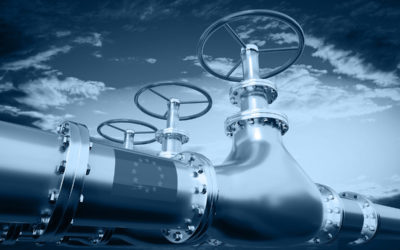

Vladimir Milov
Tapping Europe’s Offshore Energy Potential: A Way to Enhance Security of Supply
Blog
08 Dec 2022
-
For decades, the social and economic role of cities has steadily increased. Cities are financial hubs, accounting for at least 70% of the world’s GDP, while also being responsible for 70% of the world’s greenhouse gas emissions. Over the last few years, their political ambition —on both the national and international level – has also grown. Cities have been hailed as our best hope to save democracy in the 21st century and as laboratories to rethink the EU as a bottom-up network of functional cooperation, with them at its centre. They command the trust of Europeans better than national governments do, but increasingly display political preferences at odds with those of rural areas, often supporting liberal, progressive, and green forces.
How can cities contribute to solving the many challenges our societies face, starting with climate change? Should they have a more prominent role in EU institutions and policies, and how can they achieve it? How can the growing political gap between urban and rural areas be bridged and what is the role of centre-right parties? To mark the publication of its new policy brief by Konrad Niklewicz, the Martens Centre has the pleasure to invite you to a public discussion among two successful centre-right mayors of important European capital cities.
Federico Ottavio Reho Rafał Trzaskowski Environment Greece Green Deal Technology
An Urban Renewal: The Role of European Cities in our Future
Live-streams - Multimedia
17 Feb 2021
-
Arjen Siegmann is today’s surprise guest! He answered Roland’s questions about the Corona Crisis, Green Economy, Climate Change, or disinformation.
Roland Freudenstein Arjen Siegmann Environment Green Deal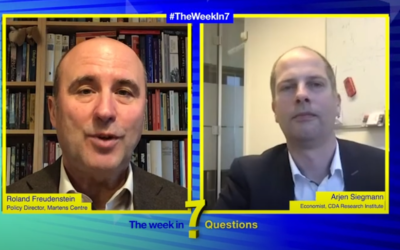
The Week in 7 Questions with Arjen Siegmann
Multimedia - Other videos
04 Dec 2020
-
‘The Art of the Green Deal’ with CDA Research Institute (The Netherlands)
Discussants:
– Eva Palacková, Senior Political Adviser, EPP
– Hans von Storch, Researcher, Institute of Coastal Research, Helmholtz-Zentrum Geesthacht
– Arjen Siegmann, Associate Professor of Finance, Vrije Universitet of Amsterdam and Economist, CDA Research Institute – Moderator
Eva Palacková Arjen Siegmann Environment Green Deal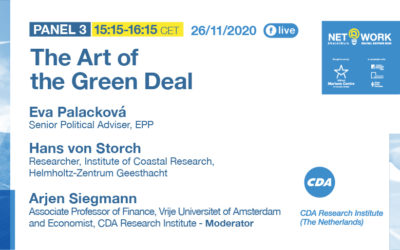
NET@WORK Day 2 – Panel 3
Live-streams - Multimedia
26 Nov 2020
-
There is a growing disparity between new and old European member states when it comes to tackling climate change and transitioning to a more sustainable economy. Large scale public and private funding, coupled with lower capital costs for financing clean energy technology, means that most of the investments and supply chains are being concentrated in the bigger Western economies. At the same time, Central and Eastern European countries (CEE) experience some of the biggest economic losses from climate-related extremes.
The Martens Centre webinar aims to address these divisions in light of the implementation of the European Green Deal and the long-term goal of carbon neutrality by 2050. How can CEE and Baltic economies make an ambitious effort toward a more sustainable economy without risking heavy job losses in specific economic sectors? Is the current design of the European Green Deal suitable in a post-pandemic Europe? How can EPP-affiliated parties in Europe introduce sensible climate policies and attract additional voters who are concerned about the environment but do not see green parties as a viable political alternative?
Rafał Trzaskowski Dimitar Lilkov Environment Green Deal
Bridging the East-West Divide on Climate Change
Live-streams - Multimedia
12 Nov 2020
-
Amid the lockdown, we’re left awestruck by the arrival of spring: blue skies, brisk air, and the general abundance of nature. However, our senses have not been suddenly heightened as we mark the second month in self-isolation. Rather, the recent statistics from the European Environment Agency and the European Space Agency show that air pollution fell dramatically, in many European cities by up to 50%, as the world came to a standstill amid the Coronavirus pandemic.
The unprecedented public health crisis exposed the many vulnerabilities of humanity, with air pollution among the risk factors. The link between COVID-19 and poor air quality appears to be threefold: death rates are higher in patients with chronic illnesses linked with exposure to air pollution. Secondly, pollutants inflame the lungs, which become more susceptible to catching the virus. And lastly, particles of pollution might even serve as a vehicle to carry the virus further. However, smog has been deadly long before the COVID-19 outbreak and it causes 430,000 premature deaths in the EU each year. The World Health Organization identified air pollution as the biggest environmental risk to health in the EU.
Air quality in tandem with climate action
The political commitment to reduce emissions has been embodied by the fight against climate change, with the primary target being carbon dioxide emissions, whose greenhouse effect warms up the atmosphere with devastating consequences for the planet. This noble cause rightly spurred global climate action, keeping world leaders awake until dawn during lengthy international negotiations, and attracted celebrity champions from Hollywood actors to youth activists.
Yet improving air quality is just as acute, with direct benefits to human health, biodiversity, and the climate as a whole. Air pollutants are different from CO2, and, rather than piling up in the atmosphere, they negatively and directly affect the air we breathe. The substances most harmful to human health are the dust-like particulate matter (PM), nitrogen dioxide (NO2), sulphur dioxide (SO2), and ground-level ozone (O3). They are primarily caused by road traffic, shipping, agriculture, domestic heating, and power generation. One might wonder, if air pollution is so dangerous, shouldn’t the EU do something about it? Thankfully, it already does, as air quality has been one of Europe’s main political concerns since the late 1970s.
Air pollution is currently regulated both at the international level, by the UN Gothenburg Protocol that sets binding emission reduction targets, and on the European level, by the Ambient Air Quality Directives that sets standards for the quality of the air we breathe. The EU also oversees the National Emission Ceilings Directive, that obliges member states to reduce total emissions of certain air pollutants, alongside other sectoral legislation.
Despite these comprehensive rules, in November 2018, the European Court of Auditors published a revealing report on air pollution, which concluded that citizens’ health remains insufficiently protected. While air quality has been improving, most member states still do not comply with the EU’s air quality standards. The European Commission faces limitations in monitoring and enforcing the rules. As of January 2018, it had 32 ongoing infringement cases regarding air pollution, and these cases can take up to eight years to resolve. So how can we advance from the status quo?
Never let a good crisis go to waste
EU standards have played a pivotal role in reducing air pollution in Europe, with simple measures such as the mandatory use of catalytic converters for petrol cars since 1993, and tighter norms for all vehicles ever since. On the other hand, the fact that many member states still fail to reach some of the air quality targets demonstrates that there are limits to the effectiveness of regulation, and that over-regulation is hardly the way to go. However, we can hardly deny the ecological and health urgency.
What is needed is a paradigm that will shift the attitudes – of policymakers, businesses, and citizens – towards a new ‘normal’. And the Corona crisis might serve as the right trigger for the much-needed synergy between public support and political action. Behavioural scientists argue that people were able to comply with the stringent lockdown measures because they understood the logic behind them. The same public awareness can now be used to advance from compliance to commitment and secure some of the new habits we have adopted as a society.
The EU should continue to highlight the political priority of the European Green Deal as the centrepiece to Europe’s resilient post-Corona economic recovery with concrete, incremental initiatives towards achieving the long-term goal of climate neutrality and zero pollution. The future common agricultural policy is designed to contribute to climate action, as is the whole EU budget for the upcoming period 2021-2027. Sustainability should be mainstreamed in all EU policies, including finance and investment, promoting research, innovation, education, and improving public information. On the global level, as has been the case with climate diplomacy, the EU should promote clean air policies in all international fora.
Member states have a pivotal role to play. As governments outline plans for massive public investment and fiscal measures to aid industries struggling due to the Corona crisis, they should not miss the ecological opportunities to attain sustainable growth and resilient jobs. Strategies to achieve cleaner air for all citizens should be supplemented by the efficient and transparent use of available EU funds. People in rural areas should have access to affordable cleaner fuels to heat their homes. In cities, local governments ought to promote more sustainable forms of transportation. Many mayors already began adding cycling infrastructure and enlarging public spaces, as a step towards deconfinement while maintaining social distancing. Where feasible, employers should enhance the possibilities to work from home, which will reduce traffic peaks. And citizens should be empowered to make informed individual choices to opt for less polluting alternatives.
Let’s do it right so that we can all take a breath of fresh air!
Eva Palacková COVID-19 Crisis Environment EU Institutions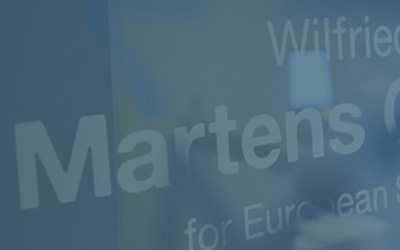

Eva Palacková
Clean air is this crisis’ silver lining: let’s work towards keeping it
Blog
20 May 2020
-
The 23rd Conference of the Parties to the United Nations Framework Convention on Climate Change took place between November 6th and November 17th 2017 in Bonn (Germany). While it is certainly worth applauding the international climate regime’s unprecedented diplomatic achievements, its actual accomplishments are subject to controversy.
The promises countries have made to combat climate change, if successfully and fully implemented, would still fall short of the aim of the Paris Agreement. Furthermore, this represents a significant ‘if’, because some states—for example the US—have expressed their desire to withdraw from the Paris Agreement, and also because successfully implementing public policy is tricky. Moreover, nation-states are under-delivering on the issue of climate finance.
Thus, with the international climate regime in difficulty, the narrative has been shifting in recent years to the role of sub-national and non-state actors. This state of affairs represents an opportunity for centre-right and like-minded political organisations in the European Union to define a policy on environmental protection, of which climate change is a sub-set, which has the potential to be both more independent and more effective than the ‘progressive’ agenda. Such an approach is based on two key characteristics: local governance and free markets.
First, centre-right thinking underlines the strong motivation local communities have in tackling environmental protection (and climate change). Centre-right and conservative thinking argues, in the tradition of Edmund Burke and the social doctrine of the Catholic Church, that society is a partnership between the living, the unborn and the dead.
It believes in civil association rather than in state intervention, and considers that the most important thing humans can do is to settle down, make a home, and pass it on to their children. As stewards of the planet, individual communities aggregated at local, regional, national, and, for some, transnational level react instinctively to preserve the environment which they have inherited and which they are to pass on to their children.
As opposed to other strands of right-wing thinking, centre-right perspectives differentiate between rational self-interest and irrational excess accumulation by stressing the intrinsic values of harmony and responsibility, which are immaterial and unquantifiable. Feelings of affection towards the ‘home’ are a much more powerful motivator for environmental protection than the ‘mission’ to save the planet, which is both far-removed and too long-term.
Second, the instrument to facilitate the natural expression of this feeling of ‘home’ is the free market, which, like local communities, has a self-correcting character. The role of the state is to ensure that free markets function in a non-discriminatory fashion based on the rule-of-law. The problem with environmental protection, in a centre-right perspective, is that polluters externalise their costs.
Under the auspices of the rule-of-law and governmental policies which make the polluter pay, individuals acting of their own free will can mobilise against big business and greed, which is a form of irrational excess. By contrast, interventionist governments may actually even facilitate the externalisation of costs, mainly to distant places with which individuals have no connection or indeed pass it onto future generations.
The approach to environmental protection and climate change should therefore give much more attention to local governance and free markets. One should examine environmental protections in the EU from a perspective of decentralisation and increased autonomy based on the principle of subsidiarity for local governance (e.g. local energy communities, free associations between cities and regions).
Furthermore, centre-right policy-makers should differentiate themselves from the left but also other right-wing thinking by stressing the fact that market-based mechanisms and non-quantifiable values-based goods go hand-in-hand. The feeling of ‘home’ represents the key motivator, not the personal balance sheet—although there is no reason why this incentive should not be explored.
In this regard, reviving the debate on the carbon tax as complementary to the current cap-and-trade system, while politically problematic, would be an appropriate conservative response to market externalities. Efforts at international governance should not be discounted but emphasis should be put on local actors, towards which the narrative seems to be shifting.
Environmental protection and climate change are real challenges our generation has to face. I have tried to outline how the centre-right in the European Union can differentiate itself from other political thinking on this issue.
It is important that individuals on the centre-right use what seems to me as international developments which speak in their favour as an opportunity to solve the problem of environmental protection through their own perspective, i.e. bottom-up, through resilient markets, rather than top-down through government intervention.
Andrei Moraru Centre-Right Environment Values

Andrei Moraru
What about a centre-right approach to environmental protection?
Blog
18 Dec 2017
-
President Trump’s withdrawal from the Paris Agreement on climate change, albeit predictable, presents both challenges and opportunities for the global system of multilevel governance. Various stakeholders are ready to fill the void, including other world leaders, such as the EU, and in particular Germany; US state actors, such as California; and even cities and businesses. Whatever the outcome, the reaffirmed joint commitment to implementing the climate targets is good news for the planet.
Read the full article in the December 2017 issue of the European View, the Martens Centre policy journal.
Eva Palacková Environment Globalisation Leadership Sustainability Transatlantic

Eva Palacková
The race for climate leadership in the era of Trump and multilevel governance
Blog
02 Nov 2017
-
President Trump’s foreign policy remains paradoxical and as yet highly uncertain. European leaders face the challenge of communicating both their interests and values in ways that the new president will welcome. Thus far, practical discussion combined with a personal connection seems the likeliest path to success. Ultimately, the EU has the opportunity not only to partner with the US but to lead the way forward based on the EU’s own fundamental commitments and values. Three important areas this could affect are security and defence, climate change policy and global trade.
Read the full article in the June 2017 issue of the European View, the Martens Centre policy journal.
Nathan Shepura Environment EU-US Foreign Policy Leadership Transatlantic

Nathan Shepura
Ledgers, anecdotes and leadership: guidelines for partnering with the new US president
Blog
22 Jun 2017
-
Most of the refugees arriving in Europe are fleeing civil war and unrest. However, it is important to recognise how the second-order effects of climate change—which can undermine agriculture and increase competition for water and food resources—are contributing to instability and decisions to migrate.
While migratory decisions are complex, climate change is an increasingly important contributing factor: it is threatening humanity’s shared interests and collective security in many parts of the world. The cumulative effects of these trends have serious implications for the stability of nations that lack sufficient resources, good governance and the resilience to respond.
While there is a need for greater understanding of the detailed causes of migration, as well as the associated economic and political instability, a growing body of evidence links climate change, migration and conflict in troubling ways.
Read the full articlein the June 2016 issue of the European View, the Martens Centre policy journal.
Michael Werz Max Hoffman Environment Migration Security Sustainability
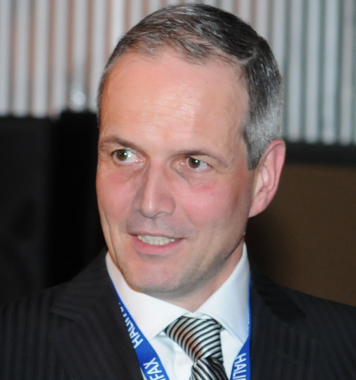
Michael Werz

Max Hoffman
Europe’s twenty-first century challenge: climate change, migration and security
Blog
03 May 2016
-
Last week the European Commission tabled energy and climate objectives with a 2030 horizon [see http://ces.tc/1lyt9j6 ]. These proposals update the well-established 2020 goals [see http://ces.tc/1fKI8k6 ] and mark another step in the evolution of the European Union’s (EU) environment policy. They also provide an updated framework for EU climate change policy in the context of the banking and financial crises which have impacted upon the EU since 2008.
A narrative common in many discussions on Europe’s energy policy relates to the perception that the EU, through its constant support for renewable energies and carbon emission reduction, has prioritised longer term environmental objectives over economic performance. Proponents of this narrative argue that a revitalised United States (US) economy, fuelled by a relatively cheap and indigenous shale gas reserve, will alter global energy supply trends and further undermine Europe’s economic competitiveness. In this context, the key question is whether the EU’s commitment to environmental protection is impacting upon economic growth?
However, an analysis of Europe’s longer-term economic growth patterns provides a different narrative. According to the OECD, Europe’s annual rate of economic growth declined continuously from 5.4% in the 1960s, 3.8% in the 1970s to 3.1% in the 1980s. It further declined from 2.3% in the 1990s to just 1.4% in the decade to 2010. Thus, Europe’s slowing economic performance cannot be attributed to the emergence of more environmentally sensitive practices.
Of course, in the short run the EU would be financially stronger by not investing in green energy and longer term emission reduction projects. However, any short term benefit to economic performance would be more than offset by further environmental degradation in the future. The scientific community agrees that fossil fuels are running out and their extraction is at an ever increasing cost. Newly-discovered fuels, such as shale gas, do not provide a sustainable long term solution. For instance, burning of shale gas produces carbon dioxide (CO2) emissions and its extraction produces even more CO2 emissions.
Eoin Drea Kalin Zahariev Economy Environment Renewable Energy
In the long-rung green energy will help contribute to achieving a sustainable energy supply path that balances economic considerations and environmental responsibilities. This will enable energy suppliers serve an ever increasing world population. Transition from our current resource intensive economic growth model to a resource efficient growth model is a must, if the EU, and Europe as a whole, to prosper in the twenty first century. Either we transform our energy production into a resource-efficient, low carbon sector, or the EU’s competitiveness will continue to decline.

Eoin Drea

Kalin Zahariev
Environment or economy? How about both?
Blog
04 Feb 2014
-
A random Google search for ‘sustainable development’ scores over 220 million search results. The world is talking about sustainability. From financial and economic policies to baby diapers – it could all be branded as sustainable (and it is). This has almost turned sustainability to a cliché.
Sustainability, however, isn’t about things. It all comes down to individual behaviour that ‘meets the needs of the present without compromising the ability of future generations to meet their own needs’ (the Brundtland Commission, 1980s). Currently, unsustainability is a lifestyle. The environment and resources serve us here and now without a long-run perspective. The unsustainable economic model collapsed and burdened future generations with the consequences. And societal challenges such as demography, employment, education and skills are undermining the stability of our communities.
The big question is how to establish the sustainable mind-set and encourage sustainable behaviour in order to turn away from unsustainability. A very good answer is through the process of education. Higher education has a major role in shaping individuals because it is a transition period to real life. Higher education institutions (HEIs) facilitate personal development and change. Universities form micro communities where institutional environment could foster creativity, productivity, social responsibility and environmental awareness. On the one hand, university campuses have the potential to become a model for environmental, social and economic sustainability. On the other hand, students bring along high motivation, energy and fresh thinking. Thus, higher education is a stable platform for ideas that belong to younger generations.
The challenges:
The idea of sustainability relates to HEIs in a simple twofold way. One vector is the concept of a sustainable university. The second vector covers the idea of integrating sustainability in the actual curricula. However, there is a catch – a list of pending obstacles to sustainability is to be ticked off:
• The risk of running sustainability as a marketing technique. Words and phrases that have to do with sustainable have become taglines. Simply put, painting a building green does not make it sustainable.
• Limiting the perception to an environmental concept only, excluding the two other pillars – society and economy.
• Introducing sustainability in higher education curricula requires plenty of efforts for HEIs and a small number of them are willing to invest time and money in it.
• Sustainability principles are not compulsory for HEIs and their curricula. Thus, some HEIs are true pioneers in the field while a large group of the organisations lag behind.
• 40 years after Stockholm Earth Summit in 1972 no sustainability strategy is being implemented in the field of higher education. Thus, there is no path to follow and no strategic approach in setting goals and measuring their implementation and impact.
• UN’s Decade of Education for Sustainable Development 2005 has not influenced significantly policy making at EU level due to the fact that higher education is still heavily dependent on strictly national policies and 28 different policies are implemented.Conclusions:
Despite the fact that the Europe 2020 strategy has set a target to achieve sustainability, a limited range of tools is available when it comes to higher education. The variety of crises (financial, economic and debt crises) that clouded over the EU made the process of introducing sustainability to higher education even slower.
The idea of sustainable development is a horizontal process that involves different governmental agencies and levels of governance – local, national, and European. Sustainability is a bottom-up process and it requires commitment and leadership. This is why all stakeholders should equally contribute to achieving the goal.
The long-term outcome from integrating sustainability in the higher education is the establishment of a mind-set and values that will be embedded in all fields of our lives. Through education, our social, economic and environmental behaviour could become sustainable by default.
Recommendations:
To higher education institutions:
• Include the three pillars of sustainability in the organisations’ mission statements and strategic goals.
• The sustainable development education requires multidiscipline approach. Instead of being a separate isolated subject (where it exists), it has to be an integrated part of large number of subjects such as economics, finance, strategic management, human resources management, engineering, medicine, etc.
• Introduce sustainability policies based on standard frameworks such as the Environmental Management Systems and ISO 14000 / ISO 14001. The framework should focus on several aspects – facilities, waste, transportation, energy, administration, etc.
• Develop sustainable campuses because they create a micro environment capable of shifting students’ mind-sets. More HEIs should establish sustainability information desks/centres at their campuses in order to generate further interest among students.
• Form partnerships on sustainability with local governments, businesses, NGOs and foundations. This will provide access to additional research capacity and funding.
• Aim at project-based learning and practical involvement in sustainability initiatives. Universities could recruit volunteers among the students who have good knowledge on sustainability. They could form groups for generating sustainability ideas, activities and cause a snowball effect for many other students.To the EU member states:
• Focus on translating sustainability to HEIs and students so they could “buy” the idea. Currently there is no big demand for sustainability, since most of the HEIs and students do not appreciate the benefits of it. Universities consider it a burdensome budget item.
• The EU Member States should be encouraged to bind accreditation and evaluation of higher education institutions to sustainable development. A special set of criteria could be established that would influence the accreditation and ranking of HEIs.
• The 2014-2020 programming period should play a vital role in funding schemes for sustainable development in higher education through operational programmes at national level.
• Funding for public HEIs should include sustainability research grants, awarded for sustainability projects. Budgeting should shift to performance based, taking into consideration sustainability criteria.To the European Commission:
• The next European Commission should work even closer with the member states to achieve a harmonised approach in integrating sustainability in higher education across the EU.
Kalin Zahariev Education Environment Sustainability

Kalin Zahariev
Sustainability? Teach them how!
Blog
29 Jan 2014
-
A Climate or Carbon Club has been proposed as a form of cooperation which could be established between like-minded countries sharing ambitious climate policies to encourage all others to follow suit and embark on equally grand climate measures. For the time being, this is a rather amorphous idea which needs to be converted into an effective instrument of the global climate transition. It remains unclear who could form a club, how its members could organise cooperation, what conditions would be expected from those willing to join, and what kind of instruments members could use to achieve their club’s aims. This In Brief seeks to shed some light on the concept.
Climate Change Environment Trade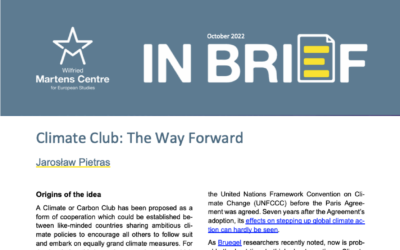
Climate Club: The Way Forward
IN BRIEF
25 Oct 2022
-
There is broad support for dealing with climate change. There is consensus among scientists, support among the population and international agreements have been concluded on a sharp reduction in emissions. However, there is still a long way to go, in which the way in which policy is implemented, the technical possibilities and affordability are constantly under discussion. An additional problem is the polarisation in the public debate, a sharpening of positions which generates media attention but makes it increasingly difficult to find the right middle ground.
For a climate policy from the middle, three questions will need to be answered. How do extreme opinions about climate arise and how can we deal with them? Who in our societies is responsible for climate policy? How can climate policy build on the existing norms and values in society so that there is support for far-reaching changes and innovations? These questions form the starting point for the contributions in this volume.
Several scientists participated in this volume: Wouter Botzen, Francisco Estrada, Jan Gooijer, David Leiser, Dirk Schoenmaker, Arjen Siegmann, Hans von Storch and Pascal Wagner-Egger. From different disciplines (psychology, economics, law and climate science) they approach topics such as the assessment of catastrophic risks, conspiracy thinking, the nature of the climate problem, the role of the central bank, corporate taxation in a circular economy and the need for technological breakthroughs.
Environment Society
Climate of the Middle: Understanding Climate Change as a Common Challenge
Collaborative
17 Jun 2021
-
A restructuring of the global economy towards lower carbon goods and services is under way. The EU’s global competitiveness hinges on consistent investment in the accelerated transformation of its energy sector and industrial base. At the same time, reducing current differences between Eastern and Western Europe in terms of the economic risks and opportunities of the transition is crucial for the continued stability of the eurozone. This policy brief argues that the EU needs to fully align public and private financial flows behind this transformation and to support this by assessing and managing the macroeconomic, fiscal and monetary impacts of the transition.
Economy Environment Macroeconomics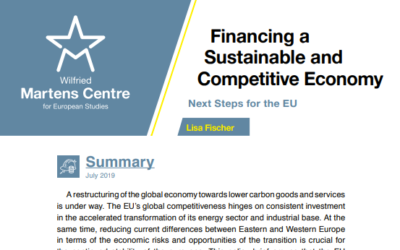
Financing a Sustainable and Competitive Economy: Next Steps for the EU
Policy Briefs
23 Jul 2019
-
The European Union, as an early proponent of the shift to alternative forms of energy, has taken impressive efforts in promoting green business and environmental reform. Where does the EU stand today in its transition towards a sustainable economic model built on green business? What challenges do European policymakers and business leaders face in their progression towards a truly green economy? The availability of and access to private forms of investment capital is one of the most important challenges for new green industries struggling to maintain competiveness in the face of growing global competition. Other practical challenges for businesses in the renewable sector are highlighted in the paper using the case study of Germany. The paper proposes new forms of investment, sustainable financial products, the creation of common standards, and greater transparency. This should go hand in hand with the continuation of renewable energy subsidies and the exchange of information and the promotion of skills among businesses.
Energy Environment Innovation
Green Energy- Green Business: New Financial and Policy Instruments for Sustainable Growth in the EU
Research Papers
01 May 2012
-
In all probability 2011 is going to be one of the most critical years in recent decades. The problems created by the global economic crisis continue to affect the lives of ordinary people and could become a source of social instability. At the same time, developments at international level are creating a sense of uncertainty since long-established balances are facing profound challenges. With contributions by distinguished scholars and policymakers from Greece and abroad, the Konstantinos Karamanlis Institute for Democracy Yearbook 2011 addresses various issues of public debate both in Europe and internationally. Special attention is given to the global economic crisis and, more specifically, to its impact on Greece, which has recently found itself at the epicenter of international attention. Certain of the essays highlight the importance of leadership as an instrument for political reform, while a special section provides an update on the major global issue of climate change.
Crisis Economy Environment EU Member States Globalisation
The Konstantinos Karamanlis Institute for Democracy Yearbook 2011: The Global Economic Crisis and the Case of Greece
Collaborative
05 Dec 2011
-
The world is rapidly moving toward increasing penetration of smaller, more local sources of energy. This paper analyses the existence and design of an optimal policy for building robust markets for distributed renewable energy solutions, specifically energy technologies that can be adopted at the point-of-use by energy users (as opposed to energy utilities) that are carbon-free and renewable. This includes the objectives of distributed renewable energy policy, how they conflict among stakeholder types, which elements have been used to stimulate market growth and which policy type can drive towards unintended and intended consequences
Energy Environment Innovation
Accelerating the Deployment of Distributed Renewable Energy: Through Innovative Market-Driven Policy Programs
Research Papers
01 Jan 2009


